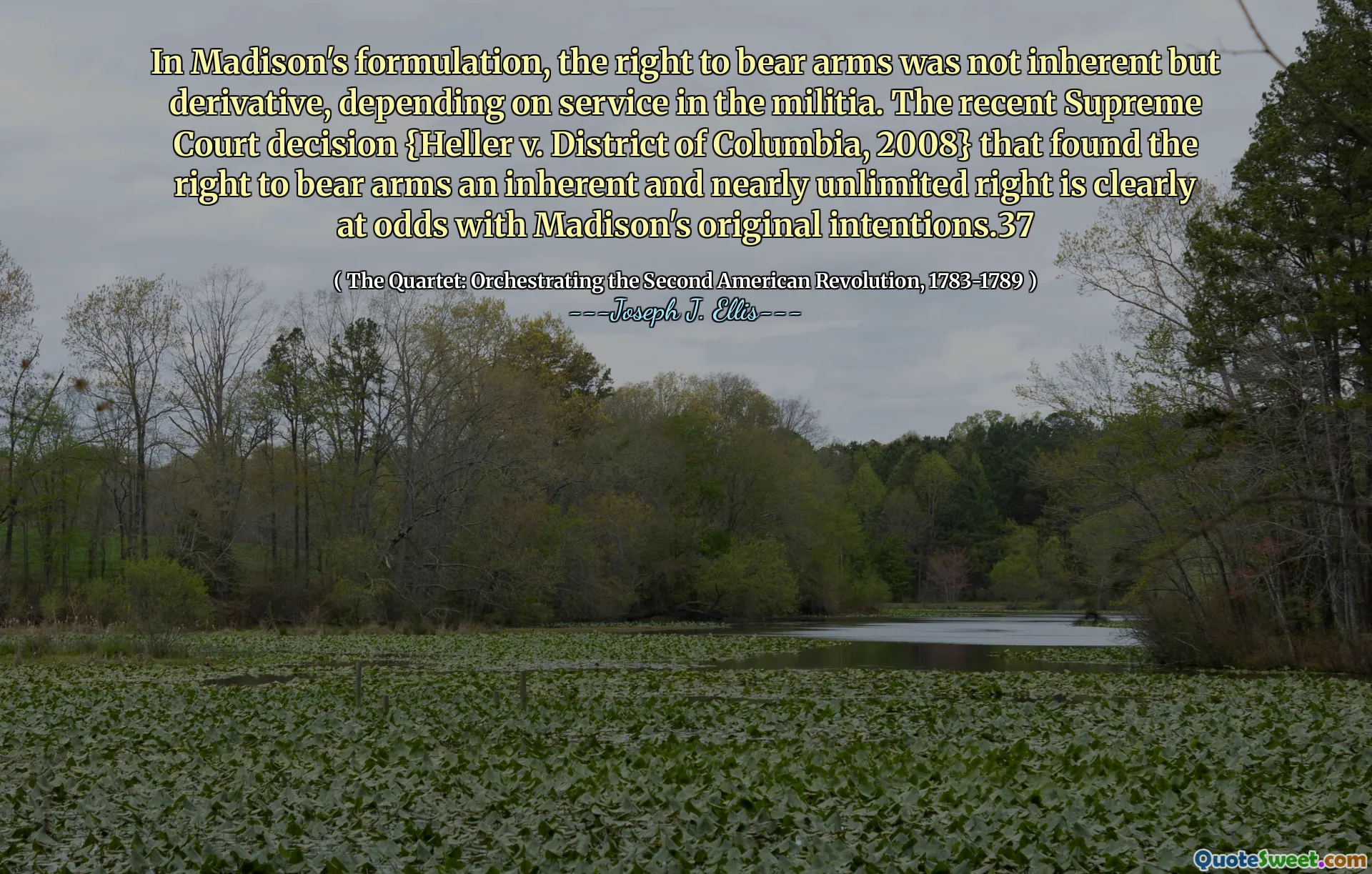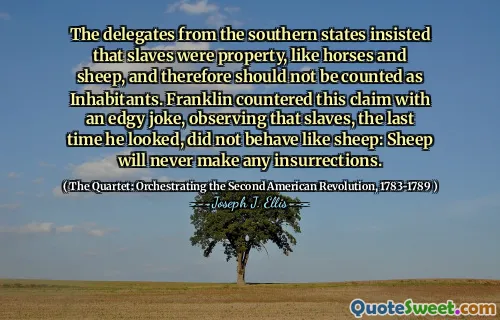
In Madison's formulation, the right to bear arms was not inherent but derivative, depending on service in the militia. The recent Supreme Court decision {Heller v. District of Columbia, 2008} that found the right to bear arms an inherent and nearly unlimited right is clearly at odds with Madison's original intentions.37
In Joseph J. Ellis's book "The Quartet: Orchestrating the Second American Revolution, 1783-1789," he argues that James Madison viewed the right to bear arms as contingent upon one's role in the militia rather than an intrinsic right. This perspective highlights the historical context in which the right to bear arms was understood as part of a collective defense structure. Madison's interpretation underscores the importance of civic duty and service in ensuring national security.
Ellis contrasts Madison's viewpoint with the Supreme Court's 2008 ruling in Heller v. District of Columbia, which established the right to bear arms as an inherent and almost limitless individual right. This decision diverges from Madison's original intent and raises questions about the evolution of gun rights in America, illustrating a shift from a collective responsibility to a more individualistic interpretation of the Second Amendment.











